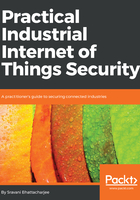
Industrial "things," connectivity, and operational technologies
In ITU-T Y.2060, we came across the following definitions for devices and things in the context of IoT (ITU-IOT): "Device: A piece of equipment with the mandatory capabilities of communication and the optional capabilities of sensing, actuation, data capture, data storage, and data processing. Thing: An object of the physical world (physical things) or the information world (virtual things), which is capable of being identified and integrated into communication networks."
In the IoT context, the capability to communicate and decipher data is an intrinsic property of things. With increasing digitization and connectivity in industries, industrial "things" include a wide spectrum of equipment and devices, starting with low memory, power, and computing footprints. In addition to physical assets, things include virtual objects, too. For example, certain IoT cloud platforms uses the concept of a digital "twin", which is an exact digital replica of its physical counterpart (for example, a wind turbine), to gain greater visibility and easier access to a CPS for efficient fault detection and remediation.
Technologies and platforms that come under the umbrella of IIoT are, in a sense, laying the foundations for greater levels of process efficiency and optimization, ushering in new business models and revenue paradigms. Connectivity is an inseparable dimension of these advancements, and one of the fundamental facets of connectivity is cyber threats, however unfortunate that may sound. As standard-based connectivity technologies replace proprietary industrial protocols, threats commonly seen in IT domains, for example, malware, data exfiltration, unauthorized remote access, and so on, become increasingly applicable to industrial networks as well.